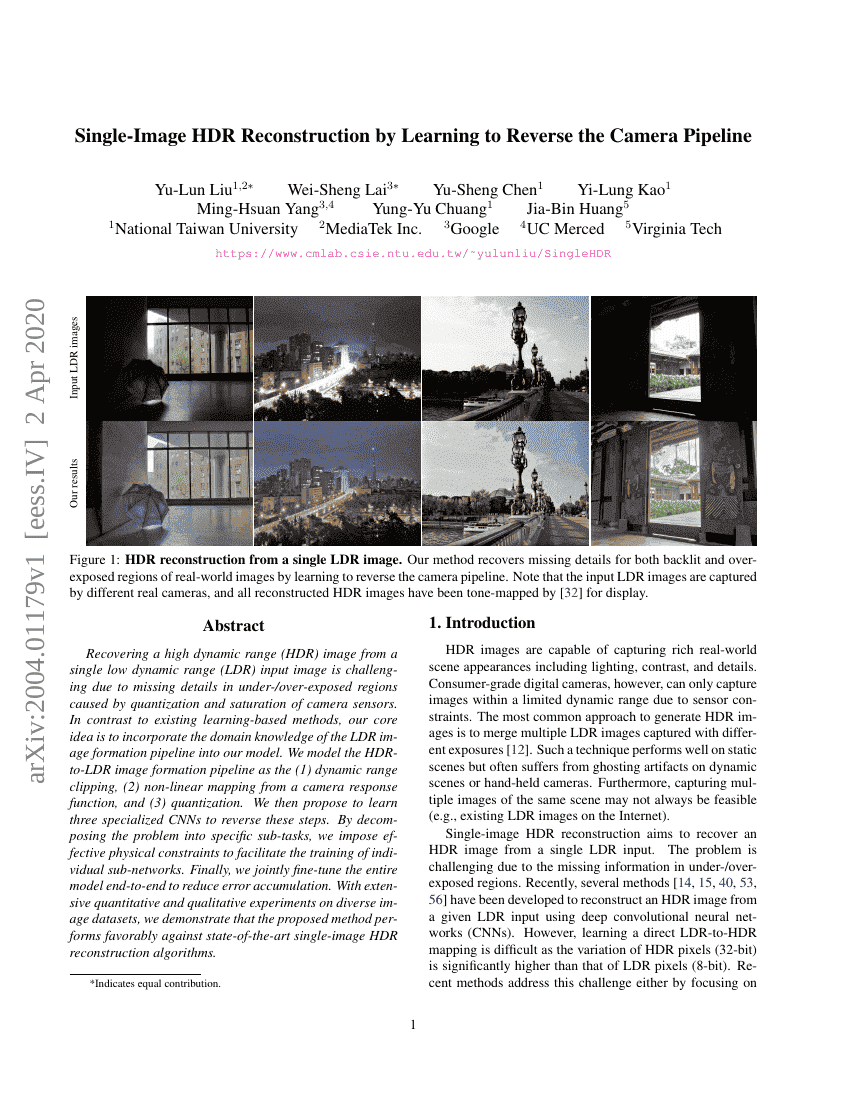Command Palette
Search for a command to run...
Single-Image HDR Reconstruction by Learning to Reverse the Camera Pipeline
Liu Yu-Lun ; Lai Wei-Sheng ; Chen Yu-Sheng ; Kao Yi-Lung ; Yang Ming-Hsuan ; Chuang Yung-Yu ; Huang Jia-Bin

Abstract
Recovering a high dynamic range (HDR) image from a single low dynamic range(LDR) input image is challenging due to missing details in under-/over-exposedregions caused by quantization and saturation of camera sensors. In contrast toexisting learning-based methods, our core idea is to incorporate the domainknowledge of the LDR image formation pipeline into our model. We model theHDRto-LDR image formation pipeline as the (1) dynamic range clipping, (2)non-linear mapping from a camera response function, and (3) quantization. Wethen propose to learn three specialized CNNs to reverse these steps. Bydecomposing the problem into specific sub-tasks, we impose effective physicalconstraints to facilitate the training of individual sub-networks. Finally, wejointly fine-tune the entire model end-to-end to reduce error accumulation.With extensive quantitative and qualitative experiments on diverse imagedatasets, we demonstrate that the proposed method performs favorably againststate-of-the-art single-image HDR reconstruction algorithms.
Code Repositories
Benchmarks
| Benchmark | Methodology | Metrics |
|---|---|---|
| inverse-tone-mapping-on-msu-hdr-video | SingleHDR | HDR-PSNR: 34.2872 HDR-SSIM: 0.9845 HDR-VQM: 0.2630 |
| inverse-tone-mapping-on-vds-dataset | Liu et al. | HDR-VDP-2: 56.97 HDR-VDP-3: 8.24 Kim and Kautz TMO-PSNR: 28.00 PU21-PSNR: 25.69 PU21-SSIM: 0.8797 Reinhard'TMO-PSNR: 30.88 |
Build AI with AI
From idea to launch — accelerate your AI development with free AI co-coding, out-of-the-box environment and best price of GPUs.